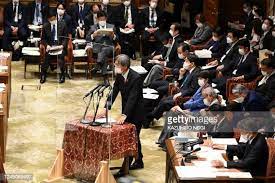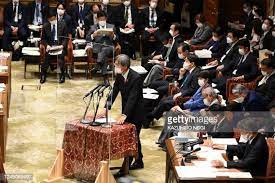This post discusses the House of Representatives, National Assembly, political parties, Seat of Parliament, speakers of the national assembly.
The House of Representatives was the lower house of the National Assembly of Kenya, under the Constitution of 1963.
Elected between 18 and 26 May 1963, it consisted of 129 directly elected Members of Parliament, with its presiding officer being the Speaker, Sir Humphrey Slade.
The leader of the largest party, the Kenyan African National Union, Jomo Kenyatta, became the Prime Minister, appointed by the Governor-General.
Following constitutional amendments in 1964, Kenya was declared a republic with an executive President replacing the offices of Governor-General and Prime Minister.
In 1966, the House of Representatives was combined with the Senate, to form an enlarged single chamber parliament, known as the National Assembly.

Under the 2010 Constitution, Kenya opted for a presidential system of government in order to achieve a sharper separation of powers between, and reduce the influence of, the executive body over the legislature. The President and his Cabinet are not members of Parliament. Of the 350 members of the National Assembly, 290 members of any gender are elected directly from single-member constituencies, forty-seven women members are elected directly from each county, and twelve representatives of special interests are nominated by parties based on the number of seats they control in the body. The sixty-eight member Senate consists of forty-seven members directly elected from each county and twenty members nominated by political parties in accordance with their share of seats in the body. In addition, the speakers of both houses are considered ex officio members.
SEAT OF PARLIAMENT
While Kenya’s past national legislatures were sequestered in Nairobi, the nation’s capital, this practice ended with the enactment of the 2010 Constitution.37 The Constitution provides that a “sitting of either House may be held at any place within Kenya and may commence at any time that the House appoints.”38 The Constitution further states that, after every general election, the President must issue a notice announcing the place and date for the first sitting of parliament.39 According to one commentator, the purpose of this language in the Constitution is “to enhance the image of the Legislature not as a den of the elites but as a truly representative Assembly.” The commentator further notes that “with this development, it is hoped that the disappointed cries of many in the rural areas who soon after the dust of the electioneering period had settled would remark ‘There our MP goes to Nairobi. We will see him in five years’ time’; will be a thing of the past.
National Assembly
The National Assembly is comprised of 290 members elected from single-member constituencies; forty-seven women representatives elected from the forty-seven counties, each constituting a single member constituency; and twelve special-interest representatives nominated by political parties in accordance with the proportion of their seats in the National Assembly.42 In addition, the Speaker of the National Assembly is an ex officio member of the body.
Political Parties
In 2013, the year the last national elections were held, there were around sixty registered political parties in Kenya.46 Following the most recent general elections, which were held in 2013, seats in Parliament were divided among seventeen parties.
Role of the Speakers of the National Assembly
Speakers of both houses of the Kenyan Parliament are ex officio members of the bodies. They are elected by each house according to their standing orders “from among persons who are qualified to be elected as members of Parliament but are not such members.”47 The Speaker of each house of Parliament chairs “any sitting of the House of Parliament. speakers of both houses are assisted by a Deputy Speaker who is elected from among the members of each house.49 The Speaker of the National Assembly, assisted by the Speaker of the Senate, presides over joint sessions of Parliament.50 The Speaker of either House has no vote on any question proposed for a decision and may not be counted as a member of the respective House for determining the number of members of Parliament for any purpose of voting.51 The Speaker of the National Assembly is second in the line of presidential succession following the Deputy President.52 However, unlike the Deputy President who, in the event of a vacancy in the office of the President, would assume the presidency and serve the rest of the term, the Speaker can serve for a maximum of sixty days until an election is held to fill the vacancy.53 The speakers of both houses decide on any procedural questions not expressly provided for in the standing orders of the houses or other relevant rules.


